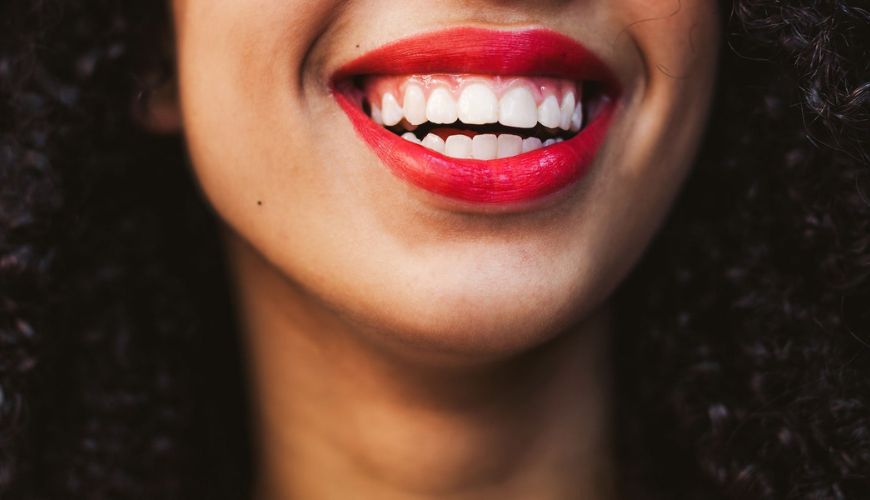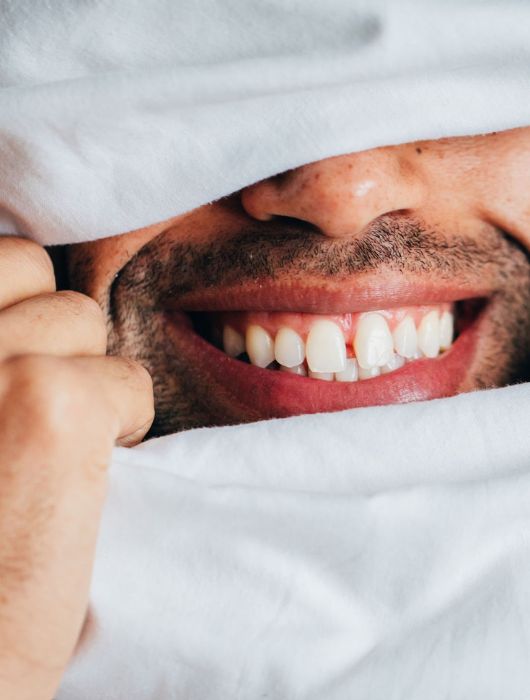If You’ve Had Braces And Need Them Again, Here’s Why
Thespotlyte | July 27, 23

Right before I tapped this sentence into my keyboard, I popped in the fourth of five Invisalign® trays comprising my third round of orthodontia. Just three years ago, I was in full-on metal braces for the second time in my life, complete with those itty-bitty plastic bands tethering the uppers and lowers together. In short, it was mortifying — especially on that year’s family vacation to London and Paris. You try looking cool ordering dinner at a chic sidewalk café in the Marais with a geeky tin grin. As a woman in her fifties, I can assure you it isn’t easy.
But here’s something else that’s très difficile: keeping your choppers straight after your orthodontic treatment ends. As New York City dentist Dr. Marc Lowenberg points out, “Teeth have memory.” In other words, they like nothing better than to move back to exactly the positions they’ve been shifted out of. And, without an extreme amount of ortho-maintenance self-discipline, you could be “back in the chair” before you know it.
For sure, being less than diligent about wearing your retainer is the primary cause of shifting, especially in those first few months after you exit treatment. That’s when teeth are most hell-bent on moving back. “Almost everybody who had braces as a kid has some kind of relapse if they don’t wear their retainer,” says Lowenberg. “But people don’t do it. Listen, it’s no different than everything else we’re supposed to do. We’re human beings.”
Still, if there was ever a time to get obsessive about wearing your retainer, it’s immediately after your braces come off, or once you’ve popped out your final set of aligning trays. According to Lowenberg, that’s why permanent retainers now exist. “The way your teeth move is: the bone [density is reduced] around the root, which allows them to move, and then the bone reforms after the tooth is moved,” he explains. “The bone is still fragile at that point, so if you don’t retain them immediately, they start moving back.”
While he agrees that poor retainer compliance is a factor in post-treatment shifting, NYC-Dubai dentist Dr. Michael Apa says there are other causes. “Teeth, whether you’ve had orthodontic treatment or not, will shift for a multitude of reasons,” he notes. “They’ll shift if you get a restoration, or a crown, or a filling that’s a little tight — all of that can shift your teeth.”
Patients who clench or grind can also throw their bite off track, says Apa, and teeth can shift with age. “A lot of the time, people do veneers or orthodontia because they’re trying to capture what their smile used to look like,” he explains, though of course, not all smiles change due to failure to use a retainer. “Obviously, though, that’s the case with the large portion of 20- or 21-year-olds who had orthodontia at 15, didn’t wear their retainers at all, and everything shifted back.”
In my case, I most certainly didn’t wear my retainers religiously after my first teenage go-round with braces. Still, it took decades before my teeth shifted enough for me to want to fix them again. With my second turn at orthodontia, I opted for classic metal again because it was the cheapest and fastest method. I also didn’t trust myself to wear Invisalign trays on my top and bottom teeth for the recommended 22 hours per day. I was in and out treatment in 16 months.
Still, I made two literally costly mistakes with my second round. One was agreeing to have my braces removed before my upper teeth were flawlessly straight, and the other was making my own rules about wearing my retainers. Because I was pretty antsy to get out of treatment, I may have applied a wee bit of pressure on my former orthodontist. Right before he had his assistant wrench off all that loathsome metal, he specifically said: “You have to be okay with the fact that your teeth aren’t 100 percent perfect.” “I am! I am!,” I assured him.

But what happened next all but guaranteed I was setting myself up for ortho failure. I was instructed to wear my retainers nightly at the very least until my doc green-lighted me to move to an every-other-night schedule. Instead, I played DIY ortho and moved myself to every other night within a few scant weeks of getting my braces off. Not brilliant.
So, here I am again, in treatment for the third time, basically trying to get one wayward upper tooth to snap into place. But, as my current orthodontist, St. Petersburg, Florida-based Dr. Nick Reynolds, points out, “It’s never about moving just one tooth.”
Rather, to achieve optimal alignment of what Reynolds calls the “aesthetic front porch” — those six teeth on top that are most visible when we smile — all of my uppers have to be moved to a certain degree, even if it’s only a fraction of a millimeter, a process that will take a total of five weeks and five trays. Although my bottom teeth aren’t perfect, they’re close enough to skip re-treatment.
While I didn’t choose to go that route, veneers are another option for building out and/or correcting one or two teeth that are really bothering you. “There are some teeth that are very stubborn,” says Lowenberg. “Even wearing traditional braces isn’t a guarantee that you’ll be able to move every tooth, especially if you have to rotate it.” He points out that some people will use clear aligners for two years and still not achieve perfectly straight results. “The only way you can get them to look perfectly straight is to put veneers on.”
While I’d love to get a permanent retainer bonded onto the back of my upper teeth once my treatment ends, that probably isn’t an option. Because of our bites, i.e., the way the top and bottom teeth come together, upper teeth can rarely accommodate a permanent retainer.
Besides, it’s typically the lower teeth that are the most in need of reining in. “Those are the ones that shift the fastest, and that unevenness is what throws everything out of whack,” says Apa. “They’re the thinnest, narrowest root in your mouth and they get a lot of pressure that kind of torques on them in a certain way that causes them to shift. They’re the most vulnerable.”
So I guess, for once in my life, I’ll have to rely on good old-fashioned self-discipline to keep my teeth in line. For me, that will mean diligent, nightly, no-excuses use of my upper and lower retainers. I just can’t head back to that chair for a fourth round of orthodontia.






